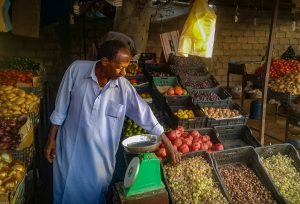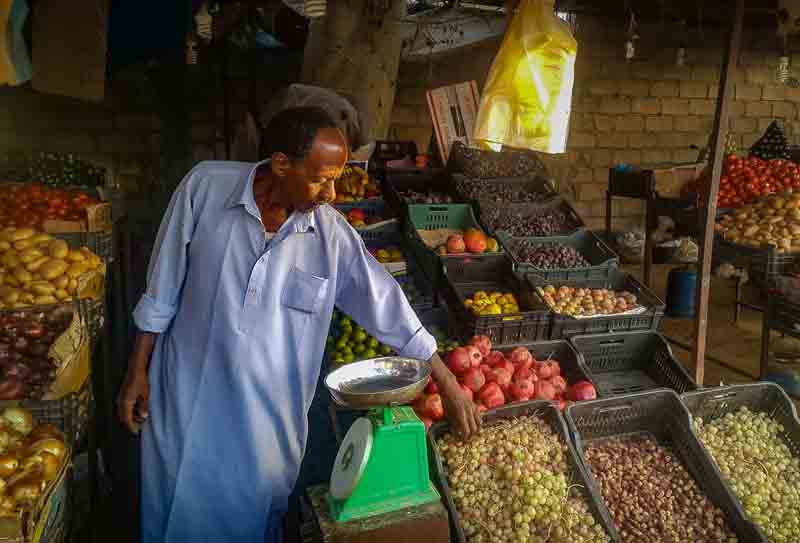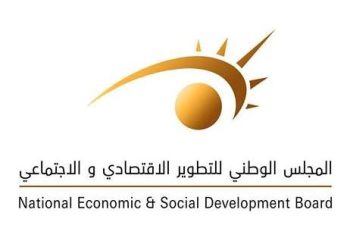By Sami Zaptia.

London, 29 October 2017:
Food prices have increased by an average of 11 percent across Libya, with significant variations between coastal and southern towns, a report says. It says that food prices have continued to increase since data collection started in June. Non-food items have been more stable, the report says.
The swiss-based NGO REACH and the Libya Cash & Markets Working Group (CMWG) published the report last week on prices and inflation across Libya. The report is part of data collection conducted across Libya to improve international humanitarian aid distribution.
In an effort to better understand market dynamics in Libya the monthly report assessed 21 key urban towns and cities, 255 shops and the availability and prices of 32 basic food and non-food items.
For food items, the October reports says that the newly added locations of Algatroun, Murzuq and Ubari in the south of Libya were found to have the highest food prices overall. They exceeded price levels found in Derna, which had previously been the most expensive location before it was included in the monthly price reports as a result of the lack of access to the city due to its military encirclement.
The report says that the relatively high prices in the south are likely driven by the remoteness of the area and challenging transportation routes. Further research needs to be conducted, the report said, to determine why Murzuq and Algatroun, a city with significant smuggling activity, are found to have such high prices, even relative to other locations in the Fezzan.
Significant median price changes compared to September were found for sugar (+10.7%), couscous (+10.1%), baby milk (+24.6%) and peppers (+29.2%). Price increases for those items were reported in nearly all locations with reference data from September. Food prices have continuously increased over the past months.
Since June 2017, food prices have risen by 10.7% on average across locations with available reference data.
The most expensive location in terms of non-food items (NFIs) was Algatroun, followed by Ubari and Tobruk. The volatile NFI prices have significantly risen in Zliten since September (+49.9%). Even though NFI prices have generally been fluctuating heavily over the past months, no notable change in the average NFI price index has been registered (+0.4%) since June 2017.
In Tripoli, Libya’s most populous city, the report covers four districts to test for variance within the city, namely Tripoli Centre, Abusleem, Hay Alandalus and Suq Aljuma. While the food and NFI prices were generally found to be fairly similar across districts, Hay Andalus reported the highest median prices and Abusleem, which hosts large numbers of IDPs, the lowest.
In Derna, the report said wheat flour was available again after shops had run out in September.
With regards to the black-market exchange rates which have a significant effect on prices and inflation, the report says that after previously having been in a downward spiral, the Libyan dinar has remained fairly stable on the parallel market over the past 6 months.
REACH says that in future reports, the factsheet will include a Survival Minimum Expenditure Basket (SMEB) to represent the minimum culturally adjusted group of items required to support a Libyan household for one month.
REACH is a joint initiative of two international non-governmental organisations, ACTED and IMPACT Initiatives, and the United Nations Operational Satellite Applications Programme (UNOSAT). REACH was created in 2010 to facilitate the development of information tools and products that enhance the capacity of aid actors to make evidence-based decisions in emergency, recovery and development contexts.







